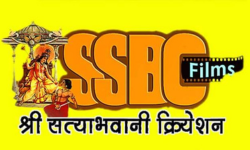Introduction
The world of cinema is evolving faster than ever. Whether you’re stepping into filmmaking, starting your acting journey, or exploring the art of editing, digital tools have become your greatest allies. They not only simplify the process but also enhance creativity, save time, and boost production quality — even for beginners!
Here’s a curated list of essential digital tools that every aspiring filmmaker, actor, and editor should explore.
🎥 For Filmmaking: Shoot Smart, Not Hard
1. Celtx / StudioBinder – Scriptwriting & Pre-Production
These platforms help you plan your entire production — from script formatting and breakdowns to call sheets and scheduling.
2. ShotDeck / Boards – Storyboarding
Visualize your scenes with high-quality references or storyboard templates. Crucial for communicating your vision with your crew.
3. FiLMiC Pro (Mobile App)
Turn your smartphone into a professional camera. Ideal for indie filmmakers or those on a tight budget.
4. Blackmagic Camera App + DaVinci Resolve
Pair your iPhone or Android footage with DaVinci Resolve for seamless color correction and professional finishing.
🎭 For Acting: Practice Makes Perfect (with Tech)
1. Rehearsal Pro
An actor’s best friend — this app allows you to highlight lines, record cues, and rehearse anytime, anywhere.
2. Self-Tape App
Create polished self-tape auditions with great audio, framing guides, and teleprompters — no fancy gear needed.
3. Scene Study Apps (like ColdRead)
Practice cold reading with AI-driven prompts. These are great for honing delivery and expression.
4. Voice Record Pro / Dolby On
Record monologues or dialogues with clarity for playback and self-analysis.
✂️ For Editing: Polish Your Final Cut
1. DaVinci Resolve / Adobe Premiere Pro
Industry-standard editing software for creating cinematic-quality videos. Both offer beginner-friendly tutorials to get you started.
2. CapCut / VN Editor (Mobile)
Quick and powerful mobile editing apps are perfect for short films, reels, or YouTube content.
3. Audacity / Adobe Audition
For clean audio mixing, dubbing, and removing background noise, essential for dialogue clarity.
4. Canva / Adobe Express
Create intro/outro titles, lower thirds, and promotional graphics for your film or showreel.
💡 Bonus: Collaboration & Project Management
1. Notion / Trello – Organize your screenplay drafts, shoot lists, and team communication in one place.
2. Frame.io / Wipster – Share rough cuts and receive feedback from your team in real-time.
Final Thoughts
Cinema is no longer locked behind expensive gear and studio gates. With these beginner-friendly digital tools, you can start creating, acting, and editing right from your home or college dorm. The best filmmakers and actors started small — what matters is that you start now.
🎥✨ Lights. Camera. Action. Digitally.





